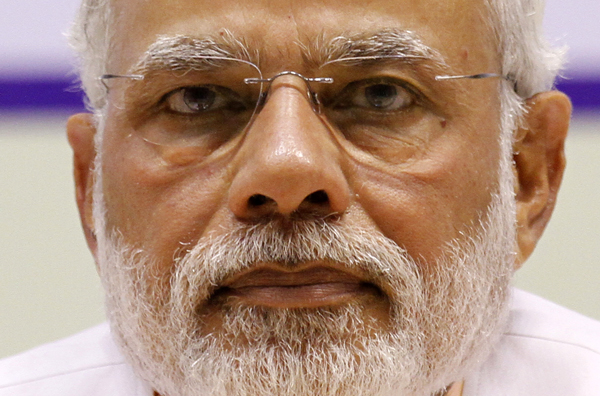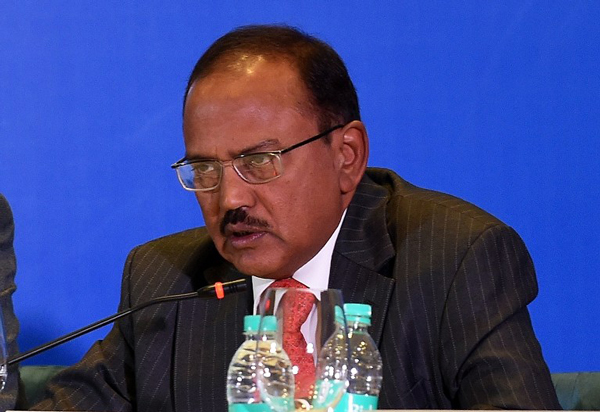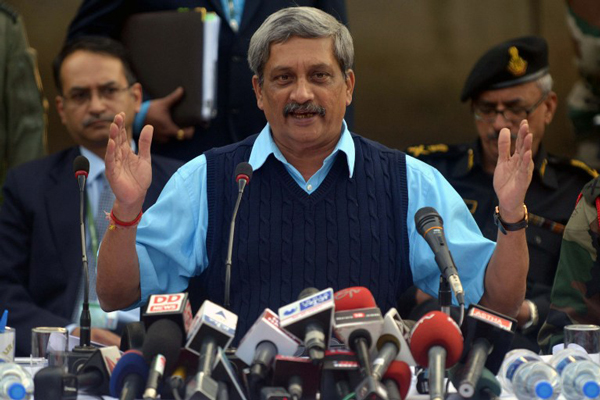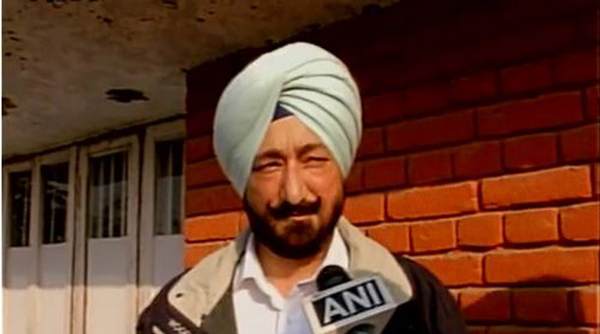Pathankot anti-terror operation: Gaping holes & questions galore

The operation to neutralise the terrorist attack on the Indian Air Force (IAF) station in Pathankot is finally over. But it leaves behind a multitude of gaping holes and questions for security agencies, Indian intelligence, Punjab Police and the government to answer.
The government has admitted to loopholes in the manner in which the entire operation was carried out despite having a tip off on the impending attack

Photo: Virendra Singh Gosain/Hindustan Times via Getty Images
The biggest question staring the Indian Prime Minister in the face is what the next step in Indo-Pak relations should be. Can Pakistan Prime Minister Nawaz Sharif's assurance that action would be taken against plotters of Pathankot attack be taken at face value?
Secondly, should Modi step in to fix the responsibility for the inept handling of the operations and make heads roll in the Indian establishment?
And with regard to his surprise visit to Pakistan, does he now think that the move has backfired? How much can the political establishment in Pakistan be blamed for the terrorist attack?

Photo: Prakash Singh/AFP
The first question that stands is what was done after intelligence officials of a friendly nation had warned of an attack on Pathankot air force facility. Interestingly, the warning had come on 25 December - the day PM Modi was visiting his Pakistani counterpart in a gesture toward improving relations between the two countries.
The second important question is why the National Security Guard (NSG) contingent rushed to the site of attack when there were thousands of Army personnel available in the vicinity. According to media reports, the Pathankot cantonment is India's biggest and houses two infantry divisions and two armoured brigades - amounting to over 50,000 troops.
These Army men are used to dealing with terrorist attack in the area and are well trained to carry out combing and clearing operations. It has been pointed out that the NSG officer who lost his life thanks to a booby trap would not have been a casualty had the clearing been conducted by Army personnel who have experience with dealing with such traps.
Although the Indian Army has stepped in to defend the decision to send the NSG troopers on the grounds that the terrorists could have taken in hostages during the attack and such an operation could have been well handled by the NSG, but a clear answer still needs to be given by the authorities who ordered the NSG deployment.
Lieutenant General KJ Singh, General Officer, Commanding-in-Chief of the Western Command, reportedly said that besides 3,000 family members of Air Force personnel, there were 23 trainees from Afghanistan, Sri Lanka, Myanmar and Nigeria inside the facility when the attack took place.

Photo: Narinder Nanu/AFP
The defence minister was candid enough in saying that there were lapses in the Pathankot operation. The first issue he needs to address is the security of various defence facilities vulnerable to such attacks across the country. Such an audit should be conducted as soon as possible.
Secondly, would there be any steps taken to enhance the combat capability of those security personnel like Defence Services Corps (DSC) or Garud commandos of the Indian Air Force to deal with such terrorist attacks? These were the people who took the brunt of the terrorist attack. DSC personnel are military veterans well past their prime who are unlikely to repulse fidayeen attacks of such nature.
The defence minister also has to ensure that there is no shifting of blame during the probe into the Pathankot attack
How is it that although the officials had forewarnings of the attack at the defence facility, they had no inkling of how many persons had infiltrated into the Pathankot Air Force station?
While the operation had been declared over on the very first day of the attack by the government, the entire security set up was in for a shock when the attack resumed on the second day. They were still left guessing as to the number of terrorists that were still holed up in the area, fuelled by rumours that the terrorists had infiltrated the residential parts of the station.
The second point where the agencies completely faltered was on how the terrorists managed to infiltrate the air base. While there have been reports that four militants used the car hijacked from Superintendent of Police Salwinder Singh after having waylaid him and his friend, the agencies remained in the dark on how the other two reached the site and what mode of transport did they used.
While the agencies have claimed to have intercepted the telephone calls made by the terrorists to their handlers in Bhawalpur area of Pakistan, they could not pin point the exact location from where the calls were made.
It is also still unknown from exactly from where the terrorists managed to infiltrate Indian territory. Did they use the routes followed by the drug smugglers through the riverine patches along the border districts or did they make use of the porous international border in Jammu and Kashmir?
An answer also needs to be found on how the terrorists managed to carry so much arms and ammunition to the site of attack unnoticed.
The delay in getting to its feet despite a senior officer of the rank of Superintendent of Police informing them of his abduction by four to five persons dressed in Army fatigues will haunt the state police for many days to come. It is being pointed that this delay in taking the information seriously enough and launching immediate search operations gave the terrorists enough time to carry out their mission.
The manner in which the police responded, particularly when a similar strike had been carried out by terrorists in Dina Nagar area of Gurdaspur just six months ago, leaves much to be answered. Four policemen lost their lives in that attack.
The second important issue is how the terrorists were able to reach their destination making use of a police car with a beacon light without being challenged at any of the police pickets in a border district.

The story told by Superintendent of Police Salwinder Singh to the National Investigative Agency (NIA) has gaping holes.
Firstly, why was a senior officer in a sensitive border district of the state moving without his gunman in the middle of the night?
His version that he had gone to visit a religious site and did not want to go there with his gunman sounds unconvincing. Also, Salwinder has been unable to give a convincing answer as to why he did not resist being abducted.The third hole in his story is the question of why the terrorists let him off, despite the fact he had a blur beacon on his car, while they injured his friend.
The state government also needs to come clear on certain aspects of the entire jigsaw puzzle.
The first question is why no lessons were learnt after the Dina Nagar attack? What was done to ensure that such an attack does not take place again?
"We want to know why Punjab has suddenly become a soft underbelly of militancy in the last few months. The deputy chief minister, Sukhbir Singh Badal, who is also the home minister is answerable for not implementing his promises on police modernisation made last year," said senior Congress leader Sunil Jakhar.
Jakhar pointed that the state government has failed to utilise the Rs 200 crore sanctioned by the Centre in 2011 for police modernisation that was to come in four installments. He said that the Centre rejected the utilisation certificate of the very first installment and that the funds lapsed.
Also, what is the state government doing to tackle the nexus between terrorist outfits across the border and the drug cartel operating in Punjab?
The responsibility for such an attack despite enough intelligence being available needs to be fixed to ensure that such attacks are handled much more efficiently in future.





![BJP's Kapil Mishra recreates Shankar Mahadevan’s ‘Breathless’ song to highlight Delhi pollution [WATCH] BJP's Kapil Mishra recreates Shankar Mahadevan’s ‘Breathless’ song to highlight Delhi pollution [WATCH]](https://images.catchnews.com/upload/2022/11/03/kapil-mishra_240884_300x172.png)

![Anupam Kher shares pictures of his toned body on 67th birthday [MUST SEE] Anupam Kher shares pictures of his toned body on 67th birthday [MUST SEE]](https://images.catchnews.com/upload/2022/03/07/Anupam_kher_231145_300x172.jpg)






